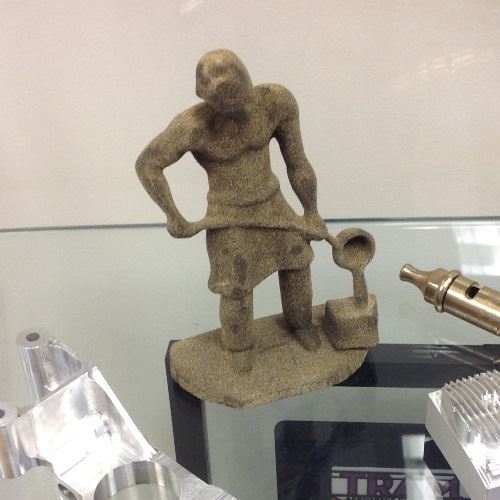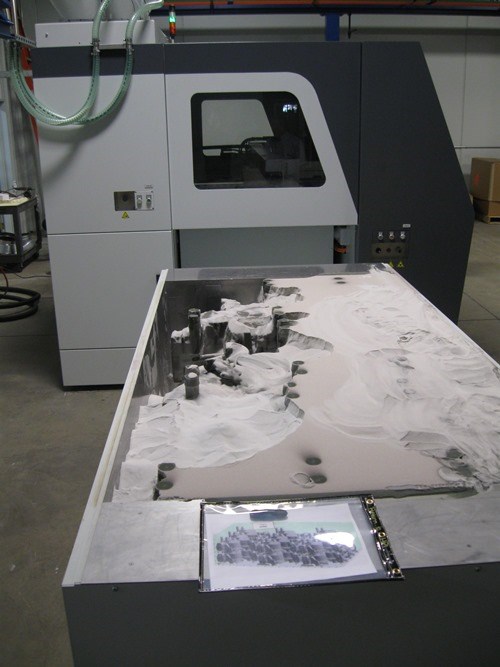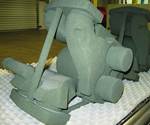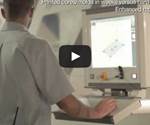Sand Printing’s Side Benefit
A pattern maker is now able to skip the pattern by printing foundry mold components directly in sand. This figurine is a byproduct of the way the company batches the sand-printing jobs for greater efficiency
Through 3D printing, the Decatur, Indiana, maker of foundry patterns is reinventing the way it serves its customers. Typically in casting, sand is packed around the pattern and packed into a core box to create the components of the mold that will shape the metal. Today, Hoosier Pattern can skip the pattern and skip the core box by directly printing these sand components. Going straight to sand in this way is such a big change (and provides such big freedoms) that many of the pattern maker’s customers are only starting to grasp the potential. Read more here.
The 3D printed figurine is essentially a side effect. The ExOne machine performing the sand printing is large enough that a number of simultaneous jobs can be nested within its work volume. With unfused sand providing vertical separation, that nesting can even be three dimensional. All that is needed for this nesting of parts-over-parts is for spacers to be added to the collection of CAD models to ensure the vertical separation.
Initially, Hoosier Pattern’s team members added simple blocks to provide the spacing. But why be so plain? In 3D printing, a complex form is just as easy to generate as a simple one. Therefore, the company began using the geometry of this foundry industry symbol as a spacer instead. When the engineer needs to vertically separate two jobs, he pulls in this figurine’s geometry and positions it between the different CAD models. That means numerous figurines might be produced in the course of running any batch of parts. The result has been an abundance of the figures, which the company gives away at trade shows and other events.
The second photo above gives a sense of this nesting inside the sand printing machine. The document in the foreground is a map of the nesting for the build of parts that has just been completed. Clearing away the unfused sand will reveal various customer cores and other casting mold components, as well as various spacers.
(PS: The photo of the figurine above is a close-up inside the display case in the office area where Additive Manufacturing’s editors work. We added this case to display interesting parts our readers have produced, and because we just got it, it’s nowhere near full yet. There is still plenty of room to add other cool parts supplied by our readers. Hint, hint.)
Related Content
-
Stratasys and Desktop Metal to Combine in Approximately $1.8 Billion All-Stock Transaction
Merger looks to deliver industrial polymer, metal, sand and ceramic solutions from design to mass production.
-
AM 101: What Is Binder Jetting? (Includes Video)
Binder jetting requires no support structures, is accurate and repeatable, and is said to eliminate dimensional distortion problems common in some high-heat 3D technologies. Here is a look at how binder jetting works and its benefits for additive manufacturing.
-
America Makes Announces IMPACT 2.0 Project Call Worth $6.6 Million in Funding
The deadline for the first set of project proposals is May 29.
















